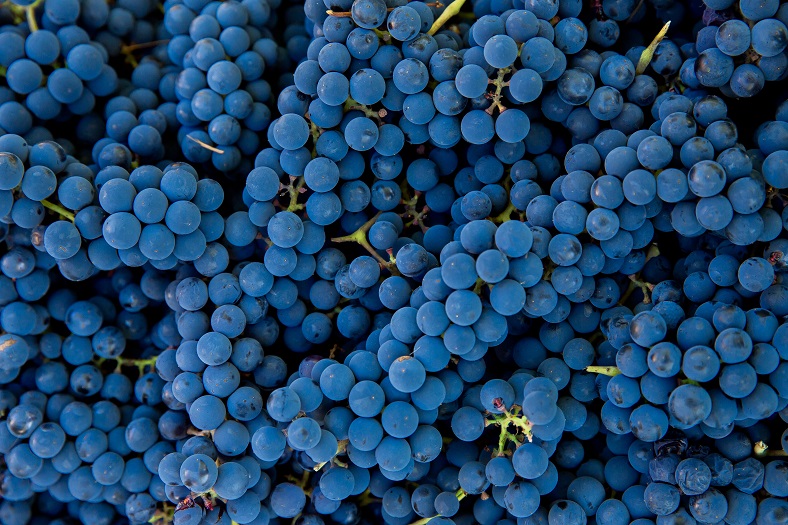
The debate surrounding the use of sulphites (or sulphur) only came out about 20 or so years ago. Yet, in this time, it has become increasingly heated and is now a bone of contention for wine lovers and wine critics alike. Vilified by some and fiercely defended by others, this old preservative has come under great scrutiny. But what are we to think?
Look at the label on most bottles of wine and you’ll see those famous words: “contains sulphites”. Today, by law, all wines with more than 10mg/l sulphites must state that they contain them. Sulphites, sulphur, SO2 and sulphur dioxide all refer to the same preservative and there are strict laws in place in Europe specifying the limits that these doses must not exceed:
•150mg/l in red wine
•185mg/l in sparkling wine
•200mg/l in white wine and rosé
Yet, even without the addition of sulphites, all wines contain traces of it: sulphur is a natural by-product of vinification (hence why labels on natural wines specify that there are no added sulphites).
Why do we use sulphites?
Sulphur dioxide is the most widely used chemical additive in wine production and also one of the most controversial due to how it affects the taste of the wine and also our health. Sulphur dioxide is an antioxidant that slows down the oxidisation process and is also an antimicrobial. Winemakers use it to inhibit or kill undesirable yeasts and bacteria and to prevent oxidisation. Sulphites can be added at various stages throughout vinification or can occur naturally during fermentation. Note that the powdery yellow sulphur you often see sprayed onto vines to keep powdery mildew at bay has nothing to do with sulphur dioxide and is accepted under organic growing methods.
Sulphur has been present in winemaking for centuries. The first mention of its use was in 1487 when German law decreed that winegrowers could burn sulphured wood chips in barrels destined to conserve wine. This effective method of disinfection, called méchage, is still common practice today (with the use of powdered sulphur rather than woodchips) although winemakers generally tend to favour the steam cleaning method.
Sulphites are used, above all in winemaking, to control fermentation and keep wines stable during the bottling process. There are four crucial stages in wine production where sulphur is widely used.
During harvest: Sodium metabisulphite is often used to inhibit wild yeasts as well as prevent oxidisation and premature fermentation. It is mainly used here as method of disinfection to stop burst grapes from turning bad and, therefore, is totally unnecessary if the grapes are picked carefully and in small batches so as to not to get squashed under their own weight.
During pressing: Sulphur can be added here to stop fermentation from wild yeasts so that the winemaker can choose which yeasts they wish fermentation to happen under: so that the wine can ferment under specially selected yeasts.
During fermentation: Sulphur can be added at any stage of fermentation although winemakers often add it towards the end so as to prevent malolactic fermentation (the transformation of tart tasting malic into softer tasting lactic acid), mainly in red wines.
During bottling: To prevent the wine oxidising in the bottle, winemakers often add sulphur during the bottling process.
These are considered the ‘classic’ methods used by those who want to eliminate as many risks as possible in the winemaking process.
Why is the use of sulphites criticised?
Any serious and passionate winemaker knows that if they want to make a commercially successful wine that is a true expression of its terroir then they must try and avoid adding sulphites where possible. This is for a couple of important reasons. Firstly, some people react badly to sulphur; it can be the cause of (often very nasty) headaches, wheezing and flushing. Secondly, sulphites can affect the taste of the wine and often weaken aromatic expression (it has a distinct toasty, struck match aroma when used excessively).
Is the addition of sulphites necessary?
As discussed, sulphites are widely used in certain instances, but whether they are totally necessary is another matter. In reality, a well-managed vineyard that is allowed to ‘fend for itself’ will produce healthy grapes without the need for chemical products. The same can be said for the use of sulphites in a well-kept cellar – using sulphur as a disinfectant is unnecessary, except for perhaps a small amount during the racking process to avoid any risk of oxidisation. Finally, to ensure that the wine keeps well once in the bottle, small doses of sulphites can be added during the bottling process.
Interestingly, red wines don’t ‘need’ as many sulphites added to them as white wines because of the natural antioxidants present in the grape skins and tannins. White wine, not having any contact with the grape skins, does not have this same benefit. Note that the use of a small amount of carbonated gas can be used just as effectively to prevent oxidisation. Sweet white wines, on the other hand, that are high in sugar, need a large dose of sulphur to prevent them from continuing to ferment.
Conclusion: sulphites, yes, but in small doses!
Sulphur, in very weak doses, is a friend to wine. It prevents oxidisation and stops the wine from turning into vinegar (a problem that some diehard zero-sulphur winemakers experience from time to time). It also helps to conserve wine destined for far away destinations. When used in excess (around more than 40g for a red and 60g for a dry white), it is harmful to a wine’s flavour profile, not to mention to those who are allergic to sulphur.



